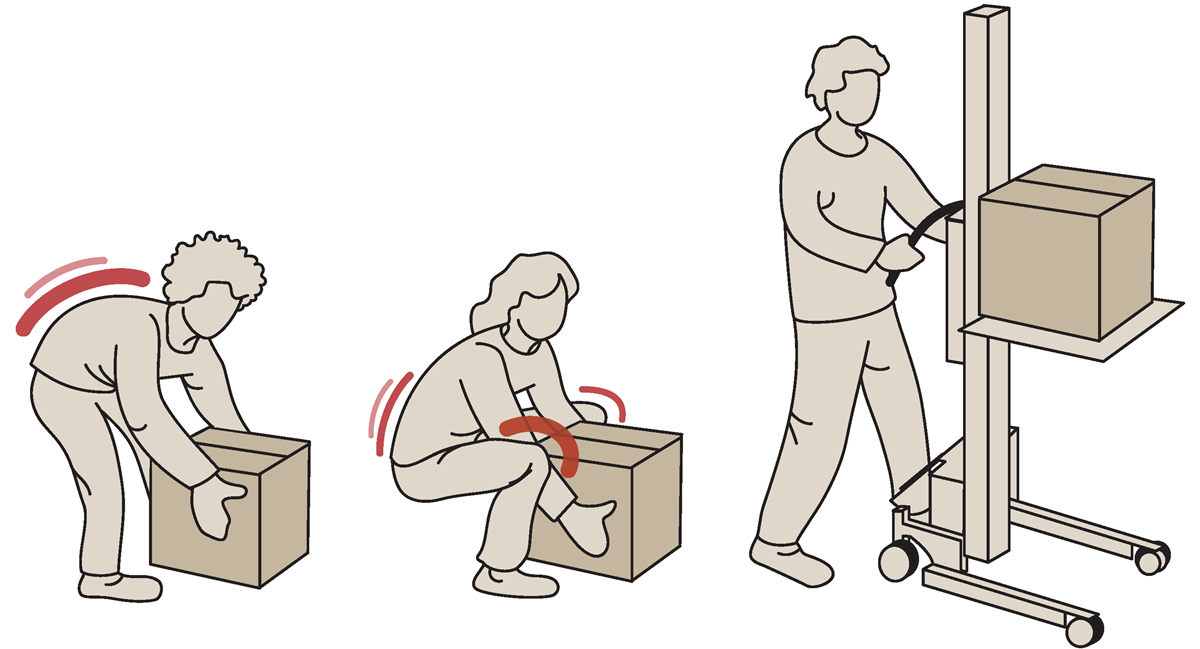How much money does your company save by investing in workplace safety?
Try it yourself ...
How much money does your company save by investing in workplace safety?
Investing in workplace safety and preventative measures doesn't just protect; it pays.
Hovmand's new calculator clearly demonstrates the financial benefits your company can achieve through such strategic investments. It's a smart, clear-cut way to see the real value of prioritising employee health and well-being. In this blogpost, you can read about the research behind and give the calculator a try yourself.
Understanding the research behind Hovmand's Care Calculator
Investing in Occupational Health and Safety (OHS) measures is not only a compliance or ethical decision, but also a strategic financial choice with significant positive impacts on employee well-being and company profitability.
A comprehensive international study of 26 cases demonstrated that in 19 of these, businesses recouped their investment in OHS measures in less than a year. On average, companies made back 214€ per worker in the first year, with these savings attributed to reduced sick leave, increased productivity and quality, and lower medical costs*.
In 2023, a follow-up study further reinforced these findings, showing that for every euro spent on OHS, companies saw a 1.24€ return within the first year – the so-called "Return on Prevention" (ROP)**.
These returns cover both direct benefits, such as fewer work-related injuries, and indirect benefits like improved employee retention and morale.
The studies collectively highlight that investing in OHS is a financially sound decision, leading to a more competitive, prosperous organisation.
Though, implementing these safety measures can face internal and external barriers. These include strict legal rules, a lack of knowledge about Occupational Health and Safety (OHS) among management, and not having enough funding.
Especially one barrier is dominant:
Calculating the direct financial benefits of safety investments can be challenging, hard to define and somewhat abstract, which makes it difficult to argue the value of such investment.
However, using insights from the mentioned studies, Hovmand has created a calculator. This tool simplifies the process, enabling you to precisely determine the amount of money your company can save by investing in prevention measures such as a Hovmand lifter.
How the Hovmand Care Calculator works
The principle behind the calculator is actually very simple. Here's your how-to guide:
- Enter the total cost of your investment in preventative measures, such as the money you spend on a Hovmand lifter.
- On the basis of this information, the Hovmand Care Calculator calculates the economic benefits after your investment.
- The benefit is distributed as a percentage over three areas: Cost savings through avoided sick leave (92 %), cost savings through productivity and quality increase (7 %) and cost savings through avoided medical costs and other costs (1 %). Read more about these areas below.
- The total benefits is calculated, using the underlying Return on Prevention (ROP) of 1.24, and the prevention net benefit is then derived from the subtraction of the total investment costs from the total benefit.
What do the areas of cost savings cover?
Cost savings through avoided sick leave
Reducing sick leave directly saves money by decreasing the need for temporary replacements or overtime payments for other employees to cover work. Consistent staff presence ensures steady workflow and avoids disruptions, maintaining the regular pace of operations. Fewer absences also reduce the administrative burden of managing leave and reallocating tasks. To highlight some examples, the companies from the studies experiences decreases in injuries, reduction in sick leaces, reduction in low-back injuries and pain, less muscle fatigue and less muscoloskelatar injuries*.
Cost savings through productivity and quality increase
A healthy workforce is more productive and produces higher quality work. Healthy employees are more focused, make fewer errors, and demonstrate greater efficiency in their tasks. This leads to better outcomes, which can attract more clients or customers, thus increasing revenue. Enhanced productivity also means that goals can be achieved with fewer resources and less time, contributing to a more efficient cost structure. In the research, a company experienced 30 hours less overtime per week, and another company experienced a productivity increase of 10 %*.
Cost savings through avoided medical costs and other costs
By preventing work-related injuries or health issues, a company can save on direct medical costs such as insurance claims, worker’s compensation, and rehabilitation expenses.


Did you read ...
Find more information about the research here:
* Verbeek et al. (2009): A systematic review of occupational safety and health business cases. https://doi.org/10.5271/sjweh.1355
** Mustard, Yanar (2023): Estimating the financial benefits of employers’ occupational health and safety expenditures. https://doi.org/10.1016/j.ssci.2022.106008

